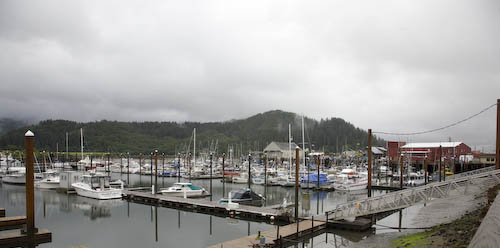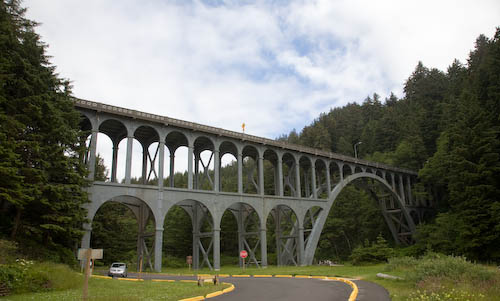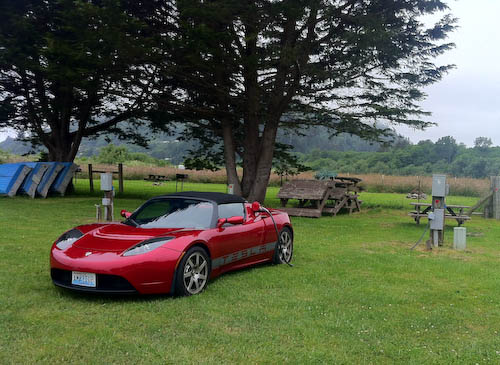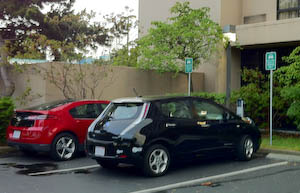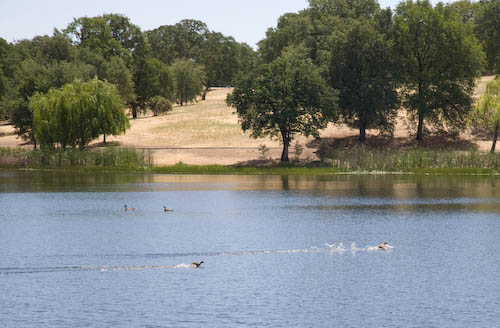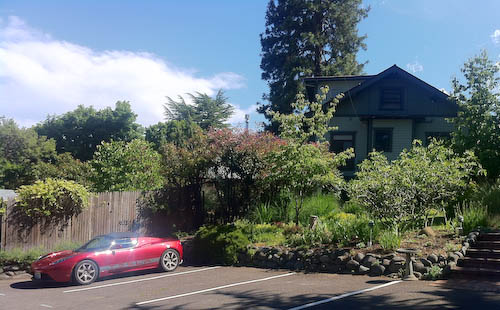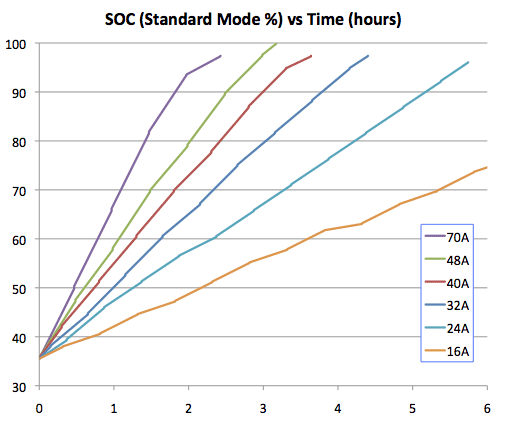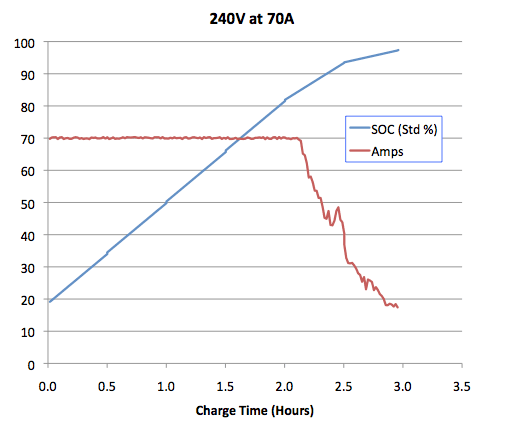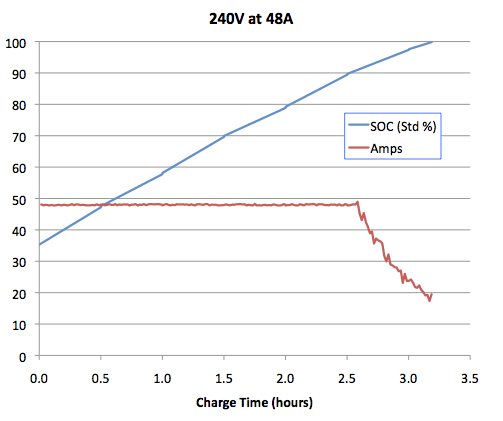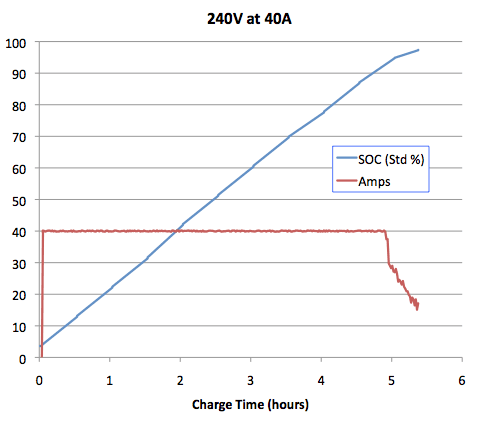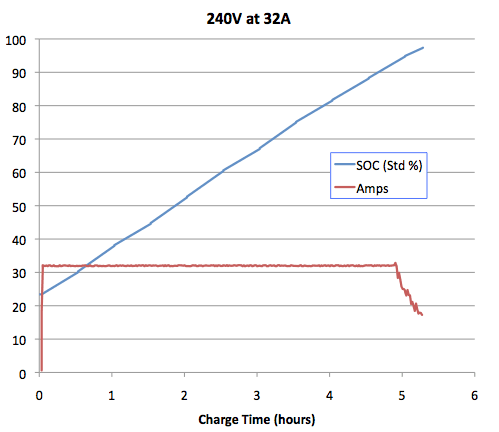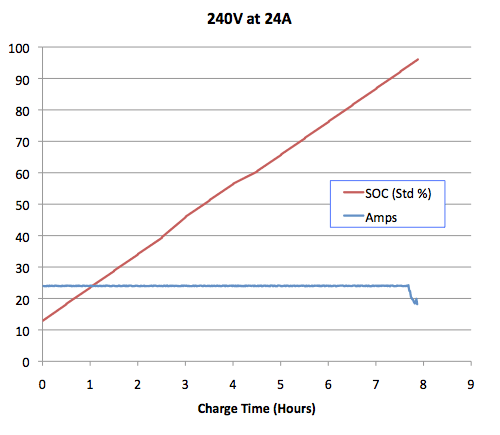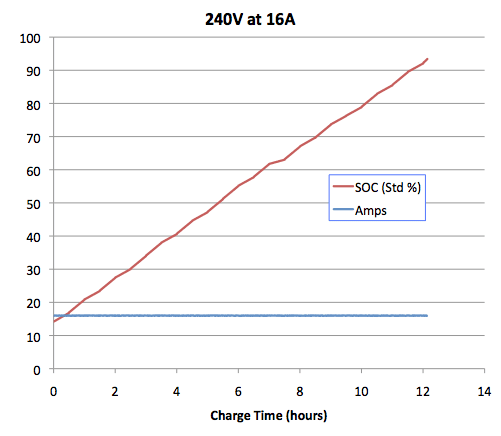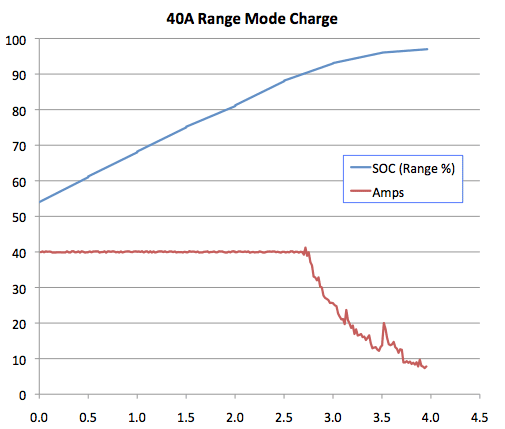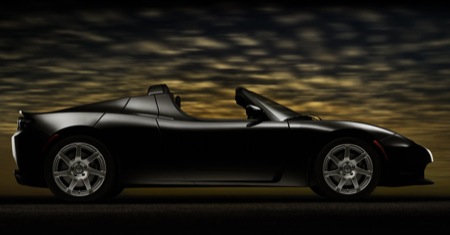| Charge Rate | Ideal Miles per Hour | Current Tapering Begins At: | |||
| Std % | Std IM | Range % | Range IM | ||
| 120V - 12A | 3.3 | ||||
| 120V - 16A | 5.1 | ||||
| 240V - 16A | 13 | 93 | 179 | 82 | 205 |
| 240V - 24A | 20 | 94 | 180 | 82 | 205 |
| 240V - 32A | 28 | 93 | 178 | 82 | 207 |
| 240V - 40A | 36 | 93 | 178 | 81 | 204 |
| 240V - 48A | 42 | 91 | 174 | 80 | 201 |
| 240V - 70A | 61 | 84 | 161 | 75 | 188 |
- It's a pain to load up the web page and do the math.
- It covers the full range of charging options from the lowest to highest power rates, but it doesn't cover every possible rate, e.g. lots of sites are on 208V circuits instead of 240V.
- It's specific to our car and the moderate temperatures in our garage.
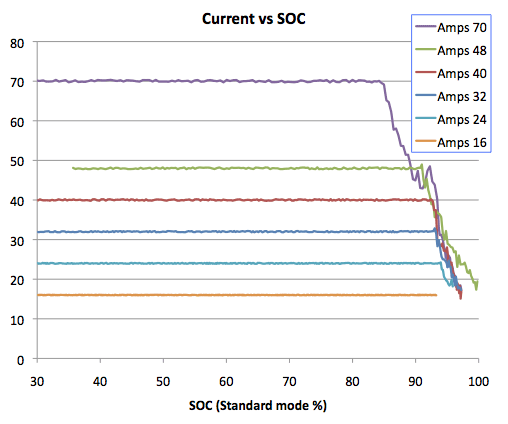
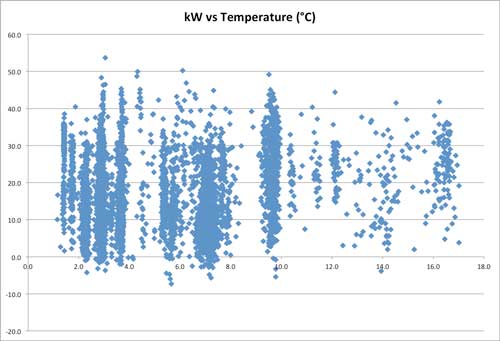
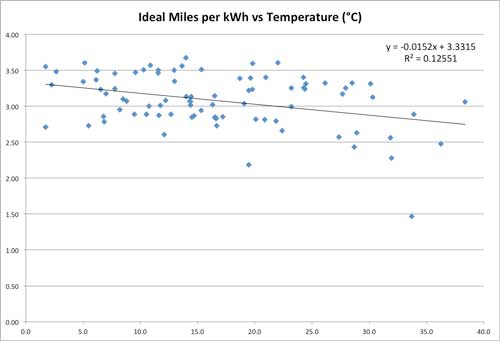
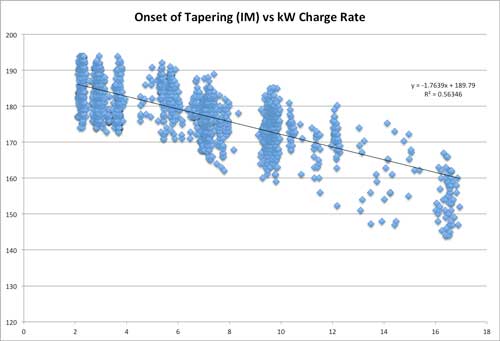
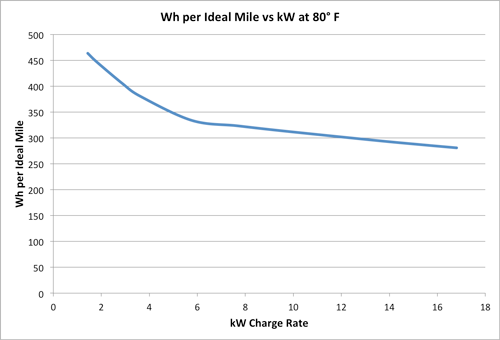
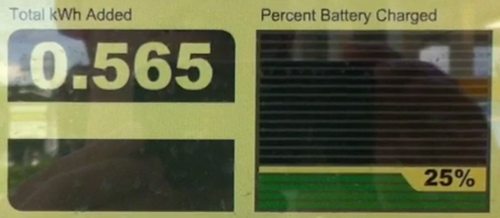
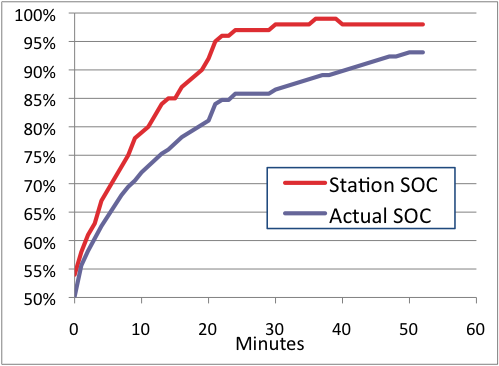

 Cathy and I took an 1,823-mile electric vehicle road trip to attend the Plug In America board meeting in Berkeley, CA, on June 23rd, 2012. Ever since we took delivery of our Tesla Roadster in June of 2009, I've wanted to take it on a long road trip just to have the experience. Over the past three years, the challenge of making the drive from Seattle to California has been greatly reduced. When Rich Kaethler took delivery of his Roadster in San Carlos, CA, and drove it back to Seattle in August of 2009, and Chad Schwitters made his long trek from Seattle to San Diego and back in April of 2010, these were pioneering efforts. Now we have full speed (240V/70A) Tesla charging along I-5 from British Columbia to southern California, which makes it possible to do the Seattle-to-San Francisco drive electrically in just a couple of days.
Cathy and I took an 1,823-mile electric vehicle road trip to attend the Plug In America board meeting in Berkeley, CA, on June 23rd, 2012. Ever since we took delivery of our Tesla Roadster in June of 2009, I've wanted to take it on a long road trip just to have the experience. Over the past three years, the challenge of making the drive from Seattle to California has been greatly reduced. When Rich Kaethler took delivery of his Roadster in San Carlos, CA, and drove it back to Seattle in August of 2009, and Chad Schwitters made his long trek from Seattle to San Diego and back in April of 2010, these were pioneering efforts. Now we have full speed (240V/70A) Tesla charging along I-5 from British Columbia to southern California, which makes it possible to do the Seattle-to-San Francisco drive electrically in just a couple of days.